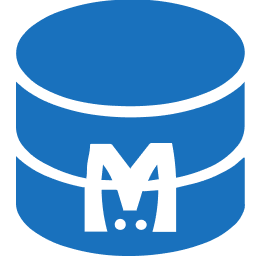You are looking at the documentation of a prior release. To read the documentation of the latest release, please
visit here.
New to KubeDB? Please start here.
Running Memcached
This tutorial will show you how to use KubeDB to run a Memcached database.
Before You Begin
At first, you need to have a Kubernetes cluster, and the kubectl command-line tool must be configured to communicate with your cluster. If you do not already have a cluster, you can create one by using Minikube.
Now, install KubeDB cli on your workstation and KubeDB operator in your cluster following the steps here.
To keep things isolated, this tutorial uses a separate namespace called demo throughout this tutorial. Run the following command to prepare your cluster for this tutorial:
$ kubectl create -f ./docs/examples/memcached/demo-0.yaml
namespace "demo" created
$ kubectl get ns
NAME STATUS AGE
default Active 1h
demo Active 21s
kube-public Active 1h
kube-system Active 1h
Create a Memcached database
KubeDB implements a Memcached CRD to define the specification of a Memcached database. Below is the Memcached object created in this tutorial.
apiVersion: kubedb.com/v1alpha1
kind: Memcached
metadata:
name: mc1
namespace: demo
spec:
replicas: 3
version: 1.5.3-alpine
doNotPause: true
resources:
requests:
memory: "64Mi"
cpu: "250m"
limits:
memory: "128Mi"
cpu: "500m"
$ kubedb create -f ./docs/examples/memcached/demo-1.yaml
validating "./docs/examples/memcached/demo-1.yaml"
memcached "mc1" created
Here,
spec.replicasis an optional field that specifies the number of desired Instances/Replicas of Memcached database. It defaults to 1.spec.versionis the version of Memcached database. In this tutorial, 3 instances of Memcached 1.5.3-alpine database is going to be created.spec.doNotPausetells KubeDB operator that if this CRD is deleted, it should be automatically reverted. This should be set to true for production databases to avoid accidental deletion.spec.resourceis an optional field that specifies how much CPU and memory (RAM) each Container needs. To learn details about Managing Compute Resources for Containers, please visit here.
KubeDB operator watches for Memcached objects using Kubernetes api. When a Memcached object is created, KubeDB operator will create a new Deployment and a ClusterIP Service with the matching crd name. If RBAC is enabled, a ClusterRole, ServiceAccount and ClusterRoleBinding with the matching crd name will be created and used as the service account name for the corresponding Deployment.
$ kubedb describe mc -n demo mc1
Name: mc1
Namespace: demo
StartTimestamp: Fri, 08 Dec 2017 15:38:51 +0600
Status: Running
Deployment:
Name: mc1
Replicas: 3 current / 3 desired
CreationTimestamp: Fri, 08 Dec 2017 15:38:56 +0600
Pods Status: 3 Running / 0 Waiting / 0 Succeeded / 0 Failed
Service:
Name: mc1
Type: ClusterIP
IP: 10.109.15.232
Port: db 11211/TCP
Events:
FirstSeen LastSeen Count From Type Reason Message
--------- -------- ----- ---- -------- ------ -------
8s 8s 1 Memcached operator Normal SuccessfulCreate Successfully created Deployment
8s 8s 1 Memcached operator Normal SuccessfulCreate Successfully created Memcached
18s 18s 1 Memcached operator Normal SuccessfulValidate Successfully validate Memcached
18s 18s 1 Memcached operator Normal Creating Creating Kubernetes objects
$ kubectl get deployment -n demo
NAME DESIRED CURRENT UP-TO-DATE AVAILABLE AGE
mc1 3 3 3 3 4m
$ kubectl get service -n demo
NAME TYPE CLUSTER-IP EXTERNAL-IP PORT(S) AGE
mc1 ClusterIP 10.109.15.232 <none> 11211/TCP 58s
KubeDB operator sets the status.phase to Running once the database is successfully created. Run the following command to see the modified crd:
$ kubedb get mc -n demo mc1 -o yaml
apiVersion: kubedb.com/v1alpha1
kind: Memcached
metadata:
clusterName: ""
creationTimestamp: 2017-12-08T09:38:51Z
deletionGracePeriodSeconds: null
deletionTimestamp: null
generation: 0
initializers: null
name: mc1
namespace: demo
resourceVersion: "3850"
selfLink: /apis/kubedb.com/v1alpha1/namespaces/demo/memcacheds/mc1
uid: 99541538-dbfb-11e7-8116-080027da1cc3
spec:
doNotPause: true
replicas: 3
resources:
limits:
cpu: 500m
memory: 128Mi
requests:
cpu: 250m
memory: 64Mi
version: 1.5.3-alpine
status:
creationTime: 2017-12-08T09:38:51Z
phase: Running
Now, you can connect to this Memcached cluster from inside the cluster.
$ kubectl get pods -n demo
NAME READY STATUS RESTARTS AGE
mc1-68b86b9f4b-bbfkb 1/1 Running 0 2m
mc1-68b86b9f4b-m5hh6 1/1 Running 0 2m
mc1-68b86b9f4b-w5469 1/1 Running 0 2m
$ kubectl get pods mc1-68b86b9f4b-bbfkb -n demo -o yaml | grep IP
hostIP: 192.168.99.100
podIP: 172.17.0.5
# Exec into kubedb operator pod
$ kubectl exec -it $(kubectl get pods --all-namespaces -l app=kubedb -o jsonpath='{.items[0].metadata.name}') -n kube-system sh
~ $ ps aux
PID USER TIME COMMAND
1 nobody 0:00 /operator run --address=:8080 --rbac=false --v=3
13 nobody 0:00 sh
18 nobody 0:00 ps aux
# Connect Memcached cluster through telnet
~ $ telnet 172.17.0.5 11211
# Save data Command:
set my_key 0 2592000 1
2
# Output:
STORED
# Meaning:
# 0 => no flags
# 2592000 => TTL (Time-To-Live) in [s]
# 1 => size in byte
# 2 => value
# View data command
get my_key
# Output
VALUE my_key 0 1
2
END
Pause Database
Since the Memcached crd created in this crd has spec.doNotPause set to true, if you delete the crd, KubeDB operator will recreate the crd and essentially nullify the delete operation. You can see this below:
$ kubedb delete mc mc1 -n demo
error: Memcached "mc1" can't be paused. To continue delete, unset spec.doNotPause and retry.
Now, run kubedb edit mc mc1 -n demo to set spec.doNotPause to false or remove this field (which default to false). Then if you delete the Memcached crd, KubeDB operator will delete the Deployment and its pods. In KubeDB parlance, we say that mc1 Memcached database has entered into dormant state. This is represented by KubeDB operator by creating a matching DormantDatabase crd.
$ kubedb delete mc -n demo mc1
memcached "mc1" deleted
$ kubedb get drmn -n demo mc1
NAME STATUS AGE
mc1 Pausing 20s
$ kubedb get drmn -n demo mc1
NAME STATUS AGE
mc1 Paused 53s
$ kubedb get drmn -n demo mc1 -o yaml
apiVersion: kubedb.com/v1alpha1
kind: DormantDatabase
metadata:
clusterName: ""
creationTimestamp: 2017-12-08T09:45:29Z
deletionGracePeriodSeconds: null
deletionTimestamp: null
generation: 0
initializers: null
labels:
kubedb.com/kind: Memcached
name: mc1
namespace: demo
resourceVersion: "4351"
selfLink: /apis/kubedb.com/v1alpha1/namespaces/demo/dormantdatabases/mc1
uid: 86597e7c-dbfc-11e7-8116-080027da1cc3
spec:
origin:
metadata:
creationTimestamp: null
name: mc1
namespace: demo
spec:
memcached:
replicas: 3
resources:
limits:
cpu: 500m
memory: 128Mi
requests:
cpu: 250m
memory: 64Mi
version: 1.5.3-alpine
status:
creationTime: 2017-12-08T09:45:29Z
pausingTime: 2017-12-08T09:45:59Z
phase: Paused
Here,
spec.originis the spec of the original spec of the original Memcached crd.status.phasepoints to the current database statePaused.
Resume Dormant Database
To resume the database from the dormant state, set spec.resume to true in the DormantDatabase crd.
$ kubedb edit drmn -n demo mc1
apiVersion: kubedb.com/v1alpha1
kind: DormantDatabase
metadata:
clusterName: ""
creationTimestamp: 2017-12-08T09:45:29Z
deletionGracePeriodSeconds: null
deletionTimestamp: null
generation: 0
initializers: null
labels:
kubedb.com/kind: Memcached
name: mc1
namespace: demo
resourceVersion: "4351"
selfLink: /apis/kubedb.com/v1alpha1/namespaces/demo/dormantdatabases/mc1
uid: 86597e7c-dbfc-11e7-8116-080027da1cc3
spec:
resume: true
origin:
metadata:
creationTimestamp: null
name: mc1
namespace: demo
spec:
memcached:
replicas: 3
resources:
limits:
cpu: 500m
memory: 128Mi
requests:
cpu: 250m
memory: 64Mi
version: 1.5.3-alpine
status:
creationTime: 2017-12-08T09:45:29Z
pausingTime: 2017-12-08T09:45:59Z
phase: Paused
KubeDB operator will notice that spec.resume is set to true. KubeDB operator will delete the DormantDatabase crd and create a new Memcached crd using the original spec. This will, in turn, start a new Deployment.This way the memcached database is resumed.
Delete Dormant Database
To delete a dormant database, it needs to be wiped out first. You can also wipe out a DormantDatabase by setting spec.wipeOut to true. There is no way to resume a wiped out database. So, be sure before you wipe out a database.
$ kubedb edit drmn -n demo mc1
# set spec.wipeOut: true
$ kubedb get drmn -n demo mc1 -o yaml
apiVersion: kubedb.com/v1alpha1
kind: DormantDatabase
metadata:
clusterName: ""
creationTimestamp: 2017-12-08T09:47:10Z
generation: 0
initializers: null
labels:
kubedb.com/kind: Memcached
name: mc1
namespace: demo
resourceVersion: "4650"
selfLink: /apis/kubedb.com/v1alpha1/namespaces/demo/dormantdatabases/mc1
uid: c2fde8cc-dbfc-11e7-8116-080027da1cc3
spec:
origin:
metadata:
creationTimestamp: null
name: mc1
namespace: demo
spec:
memcached:
replicas: 3
resources:
limits:
cpu: 500m
memory: 128Mi
requests:
cpu: 250m
memory: 64Mi
version: 1.5.3-alpine
wipeOut: true
status:
creationTime: 2017-12-08T09:47:10Z
pausingTime: 2017-12-08T09:48:00Z
phase: WipedOut
wipeOutTime: 2017-12-08T09:48:50Z
$ kubedb get drmn -n demo
NAME STATUS AGE
mc1 WipedOut 1m
You still have a record that there used to be a Memcached database mc1 in the form of a DormantDatabase database mc1. Since you have already wiped out the database, you can delete the DormantDatabase crd.
$ kubedb delete drmn mc1 -n demo
dormantdatabase "mc1" deleted
$ kubedb get drmn -n demo
No resources found.
Cleaning up
To cleanup the Kubernetes resources created by this tutorial, run:
$ kubectl delete ns demo
If you would like to uninstall KubeDB operator, please follow the steps here.
Next Steps
- Learn about the details of Memcached crd here.
- Thinking about monitoring your database? KubeDB works out-of-the-box with Prometheus.
- Learn how to use KubeDB in a RBAC enabled cluster.
- Wondering what features are coming next? Please visit here.
- Want to hack on KubeDB? Check our contribution guidelines.



































